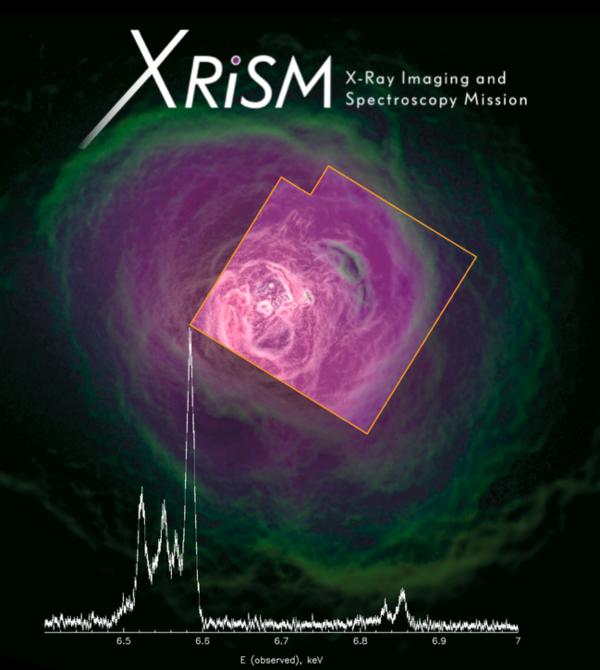
"Science with XRISM: A New Window on the X-ray Universe"
- Event Type
- Seminar/Symposium
- Sponsor
- Department of Astronomy
- Location
- 134 Astronomy
- Virtual
- Join online
- Date
- Oct 24, 2023 3:45 pm
- Speaker
- Brian Williams, NASA Goddard
- Contact
- Rebecca Bare
- rsbare@illinois.edu
- Phone
- 217-265-8226
- Views
- 105
- Originating Calendar
- Astronomy Colloquium Speaker Calendar
At 23:42 UTC on September 6th, 2023, the X-ray Imaging and Spectroscopy Mission (XRISM) lifted off from Tanegashima Space Center in Japan, ushering in a new era of high-energy astrophysics. XRISM, an international JAXA/NASA collaboration including participation from ESA, is an advanced X-ray observatory capable of carrying out a science program that will address some of the most important questions in astrophysics in the 2020s. XRISM is essentially a rebuild of the Hitomi (Astro-H) spacecraft that was lost due to an operational mishap early in the mission in 2016. Resolve, the primary instrument on XRISM, is a high-resolution, non-dispersive X-ray spectrometer operating between 0.3-12 keV, providing high-resolution (~5 eV) spectroscopic capabilities in this critical energy band with a response peaking around the ubiquitous 6.4 keV Fe K-alpha line. A wide-field imager, Xtend, will offer simultaneous coverage over nearly a 40’ square field of view, with ~1’ spatial resolution. XRISM will study all manner of astrophysical objects, including galaxies and clusters, AGN, X-ray binaries, supernova remnants, transient phenomena, stars, and the interstellar medium. In this talk, I will highlight some of the scientific topics that XRISM will address, in addition to providing a general status update on the mission. I will discuss the synergies between high-resolution X-ray spectroscopy and observations at other wavelengths, including optical, radio, and IR. Following an approximately three-month checkout and calibration phase and a six-month performance verification phase, XRISM will enter the General Observer (GO) phase, in which it will remain for the duration of the mission. Funding will be available from NASA through the GO phase to US-based PIs, and the first announcement of opportunity is anticipated to be due approximately 5 months after launch.